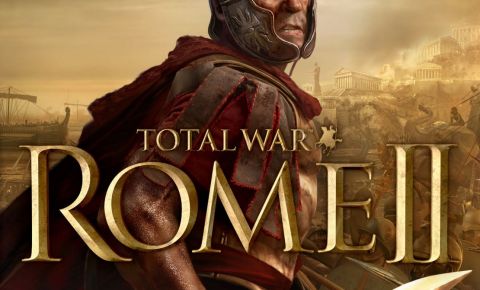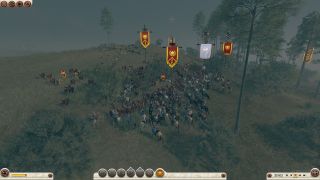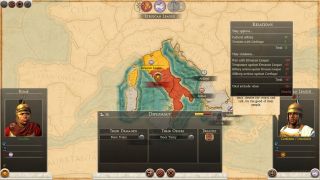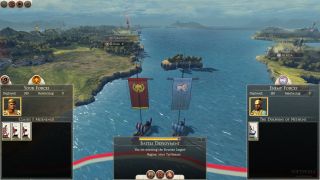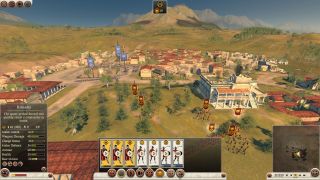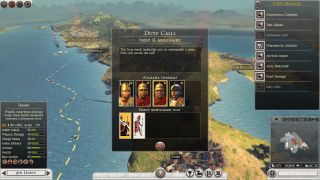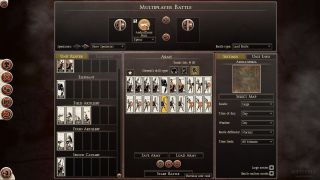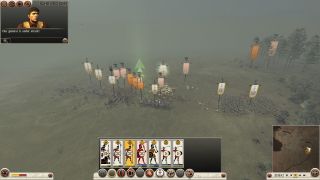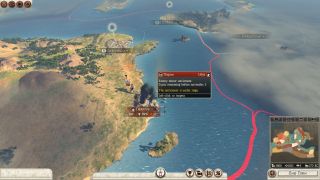One of my favorite books when I was in fourth grade was a compendium that listed the many legends of the ancient Roman Gods, which was followed up in the eighth grade by the history of the Roman Republic and in high school by many hours spent in the company of Rome: Total War, recreating and altering the historical events I had only read about.
Total War: Rome II is, alongside Europa Universalis IV and Football Manager 2013, one of the most awaited games of the fall season and I am happy to report that the new title from developer The Creative Assembly and publisher SEGA will probably eat up hundreds of hours of my life.
Story
Total War: Rome II takes players back to 272 BC, the date that the original game used, and once more gives them the chance to choose from a number of factions and then try to dominate Antiquity via warfare, mainly, but also via economic and diplomatic means.
There are eight factions to choose from this time around, with some of them also offering a choice between competing political entities like the Roman families, and more will be added for free and via paid downloadable content at a later date.
The scope of Rome II is a little larger than that of the first game in terms of how far the map reaches and when it comes to the number of factions that are included and the new game is also much more concerned with telling stories about the Ancient World and the generals and politicians that have dominated it.Generals and public figures are now a vital resource for all empires and there’s more emphasis on the way empires work, although solid performance in battle is still crucial, backed up by solid economic management.
The most impressive element of the setup for the Total War: Rome II campaign is the huge array of factions that the Artificial Intelligence is controlling, visible when the end turn button is hit, which will promptly be opened up for user access by the community.
Gameplay
Total War: Rome II is a step forward for the entire series because it takes its core elements, strips down some that felt superfluous and introduces some much needed historical flavor.
The biggest change the fans will notice right away is how the map is organized, with cities much less important than they were in the first Rome and much of the management taking place on the province level.
It’s very easy to see how a region is doing and how it can profit from a new building, all of which has province-wide effects, and there are some interesting decisions to make when all cities in an area are controlled.
Some long-term fans will miss the towns they were able to customize, but the Rome II system seems more elegant and more thematic, because it gives players more time to deal with strategic planning and battle management.The gorgeous strategic map also has choke points, based on natural features, and well-placed cities, which leads to more meaningful battles and tends to eliminate the small skirmishes that dominated earlier titles in the series.
The new Total War also introduces traditions for the legions and armies the player controls and makes commanders more important, creating a set of mechanics that bring realistic restrictions for both the player and the computer.
The team was also smart enough to put some hard limits on empire growth, which means that players need to plan ahead, take into account public opinion and economic growth before launching a big war of conquest.
The downside to the many mechanics and huge map of Rome II is that it all takes time and the game tends to run rather slow even on very solid computers, especially when the computer-controlled opponents act.
The changes made to the real-time battles are smaller, but the entire experience feels a little faster and more decisive, with most armies tending to break down and flee once they take significant losses.
Line of sight is introduced to make sure that ambushes can be created, making it more important to use light forces to scout ahead and make sure that the main battle line is not attacked from the flanks.
War is beautiful and brutal in Total War: Rome II and I have often paused the battles just to zoom in, look at a charge, watch how my men are doing without neglecting the overall tactical challenges I had to deal with.The Artificial Intelligence in the new Total War is solid in the real-time battles from my experience, but it tends to get worse on the strategic map, sometimes using small armies that have no chance against my own troops and often failing to create mutual beneficial alliances.
Naval battles are another weak point, as they feel imprecise and mostly become melees that lack any sort of tactics.
But, overall, the biggest problem with Total War: Rome II is that it takes time to get through a campaign and as the game progresses, a single turn can take minutes to complete.
Graphics and audio
Traditionally, complex strategy games are best known for their mechanics and their emerging narratives than for the graphics, but The Creative Assembly has always pushed the hardware to its limits for Total War and Rome II is no exception.
The game is gorgeous most of the time, as long as the player has the PC required to run it using high details settings, with a map that understands how to walk the fine line between realism and exaggerated features to guide the player.
Clouds are moving, as are waves, legions shift places organically and cities actually spread on the map as they evolve and that’s before launching one of the battles that form the heart of the game.
Both on land and on water, combat is amazing, as long as the player’s machine is powerful enough to run the game at above average setting and the general has time to zoom in and take in the spectacle.Soldiers have variety and they behave naturally, with realistic reactions when they get attacked by cavalry and celebrations when an enemy unit is routed from the field.
Factions have distinctive personalities, units can quickly be identified on the battlefield and the user interface is very informative both during combat and on the strategic map.
The Creative Assembly has also paid attention to the sound design and there’s a majesty to the in-game announcement and to the music that is well suited to the theme of the game, although at times the battle music can be a little distracting.
Multiplayer
The new Total War allows players to tackle a campaign in multiplayer, with players taking control of different factions, but the mode takes a lot of time to make any meaningful progress so that means the classic player versus player battles will probably be the most played mode.
There are quite a few maps for players to choose from, with interesting designs, and there are plenty of options to customize an army before taking it into an actual battle.
The strategic experience is more interesting than ever, with plenty of options to take out enemies via military force and covert action, and the tactical battles, at least on land, are both challenging and spectacular from a visual standpoint. The overall interface and empire management are streamlined and engaging and there’s more attention to detail in Rome II than ever. Unfortunately, the new Total War game takes up quite a bit of time to process its turns and for newcomers there’s also the issue of the learning curve to deal with. Much of the strength of the series is linked to the community and the mods that it creates and Total War: Rome II offers a great platform on which to improve and deliver even more historically realistic experiences.
The Good
The Bad
Conclusion
 14 DAY TRIAL //
14 DAY TRIAL // 